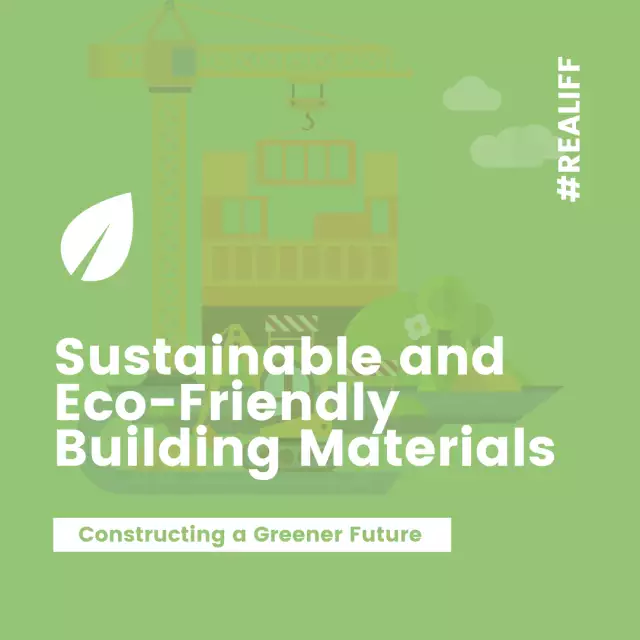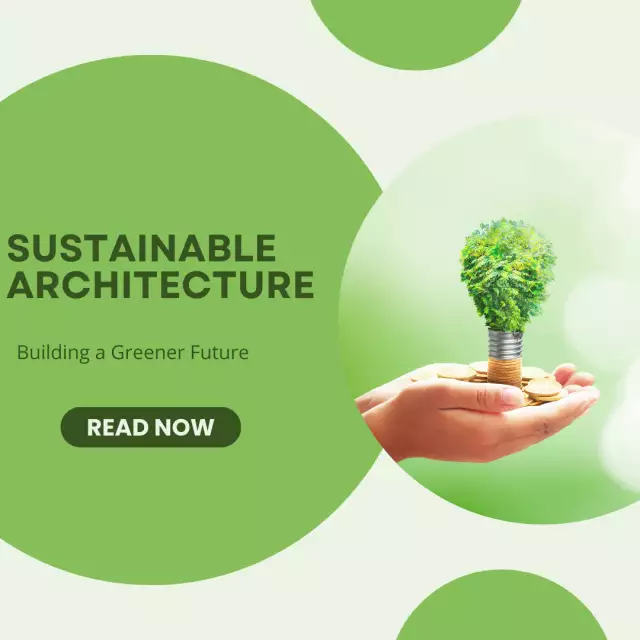Sustainable Real Estate: Examining Eco-Friendly and Energy-Efficient Practices in Development and Construction
Sustainable Real Estate: Examining Eco-Friendly and Energy-Efficient Practices in Development and Construction
Sustainable real estatedevelopment and construction have gained significant momentum in recent years as society becomes more conscious of environmental issues. This blog post explores the key aspects of sustainable real estate, including eco-friendly practices, energy efficiency, green building certifications, renewable energy integration, and sustainable neighborhood planning. By embracing these practices, the real estate industry can contribute to a greener future while also reaping economic benefits.
Eco-Friendly Practices in Real Estate Development and Construction
Eco-friendly practices in real estate development and construction are essential for reducing the industry's environmental impact. Efficient land use and preservation of natural resources are crucial considerations. Developers can achieve this by focusing on infill projects, repurposing existing structures, and avoiding excessive land consumption. Additionally, sustainable materials selection, such as using recycled and locally sourced materials, can significantly reduce the carbon footprint associated with construction.
Water conservation strategies are another important aspect of eco-friendly practices. Incorporating low-flow fixtures, water-efficient landscaping, and rainwater harvesting systems can help minimize water waste and preserve this valuable resource. Furthermore, implementing effective waste management and recycling programs ensures that construction and demolition waste is diverted from landfills, contributing to a circular economy.
Where can I acquire a loan for an investment property?
Energy Efficiency in Real Estate
Energy efficiency is a key component of sustainable real estate. By incorporating energy-efficient design principles, such as proper insulation, energy-efficient windows, and natural lighting, developers can reduce energy consumption and improve the comfort of occupants. Utilizing energy-efficient appliances and HVAC systems further contributes to energy savings.
The integration of smart technologies enables energy management and automation, optimizing energy usage based on real-time data and occupant needs. This can include smart thermostats, lighting controls, and building management systems. Conducting energy audits to identify areas for improvement and implementing energy-saving measures based on the findings is also crucial for enhancing energy efficiency in real estate.
Green Building Certifications
Green building certifications provide standardized frameworks for sustainable real estate development. The Leadership in Energy and Environmental Design (LEED) certification is one of the most widely recognized and respected certifications globally. It evaluates various aspects, including energy efficiency, water conservation, sustainable materials, indoor environmental quality, and innovation.
Another notable certification is the WELL Building Standard, which focuses on occupant health and wellness. It emphasizes features like air quality, natural lighting, biophilia, and ergonomic design elements. The Building Research Establishment Environmental Assessment Method (BREEAM) is an internationally recognized sustainability rating system that assesses various environmental categories, including energy, water, waste, pollution, and ecology.
Renewable Energy Integration
Integrating renewable energy sources into real estate projects plays a crucial role in achieving sustainability goals. Solar panels are a popular choice for on-site renewable energy generation. They can be installed on rooftops or as solar carports, reducing dependence on fossil fuel-based electricity and decreasing greenhouse gas emissions.
Wind turbines can also be considered in locations with sufficient wind resources. These turbines convert wind energy into electricity and can contribute significantly to the renewable energy mix. Geothermal heating and cooling systems utilize stable temperatures below the ground's surface to provide energy-efficient heating and cooling for buildings.
Innovation in renewable energy technologies continues to emerge, such as kinetic energy harvesting from foot traffic or vibrations. These technologies can help offset energy consumption and contribute to the overall sustainability of real estate developments.
Sustainable Neighborhood Planning
Sustainable neighborhoodplanning focuses on creating communities that promote environmental responsibility, social interaction, and well-being. Walkability and access to public transportation are vital factors for reducing reliance on private vehicles and decreasing carbon emissions. Preserving green spaces and implementing urban gardens provide multiple benefits, including improved air quality and enhanced biodiversity within the community.
Designing mixed-use developments that integrate residential, commercial, and recreational spaces reduces the need for long commutes, leading to a more sustainable lifestyle. By providing amenities within walking or cycling distance, residents can enjoy a higher quality of life while minimizing their environmental impact.
Community facilities and amenities are essential elements of sustainable neighborhood planning. Including parks, community centers, schools, and healthcare facilities fosters social interactions and a sense of belonging. These spaces can also promote sustainable practices, such as community gardens, recycling centers, and bike-sharing programs.
Moreover, sustainable neighborhood planning encompasses the consideration of infrastructure systems. Implementing efficient stormwater management systems, utilizing permeable surfaces, and adopting smart grid technologies for energy distribution can further enhance the sustainability of a community.
| Aspect | Description |
| Eco-Friendly Practices | Efficient land use, sustainable materials, water conservation, and waste management |
| Energy Efficiency | Energy-efficient design, appliances, smart technologies, and energy audits |
| Green Building Certifications | LEED, WELL Building Standard, BREEAM |
| Renewable Energy Integration | Solar panels, wind turbines, geothermal systems, and innovative energy technologies |
| Sustainable Neighborhood Planning | Walkability, access to public transportation, green spaces, mixed-use developments |
Conclusion
Sustainable real estate development and construction play a vital role in mitigating climate change and creating environmentally responsible communities. By adopting eco-friendly practices, emphasizing energy efficiency, obtaining green building certifications, integrating renewable energy sources, and implementing sustainable neighborhood planning, the real estate industry can contribute to a more sustainable and resilient future. Embracing these practices not only benefits the environment but also enhances the market value of properties and improves the well-being of occupants. By prioritizing sustainability, the real estate sector can be a catalyst for positive change and pave the way for a greener and more sustainable society.






